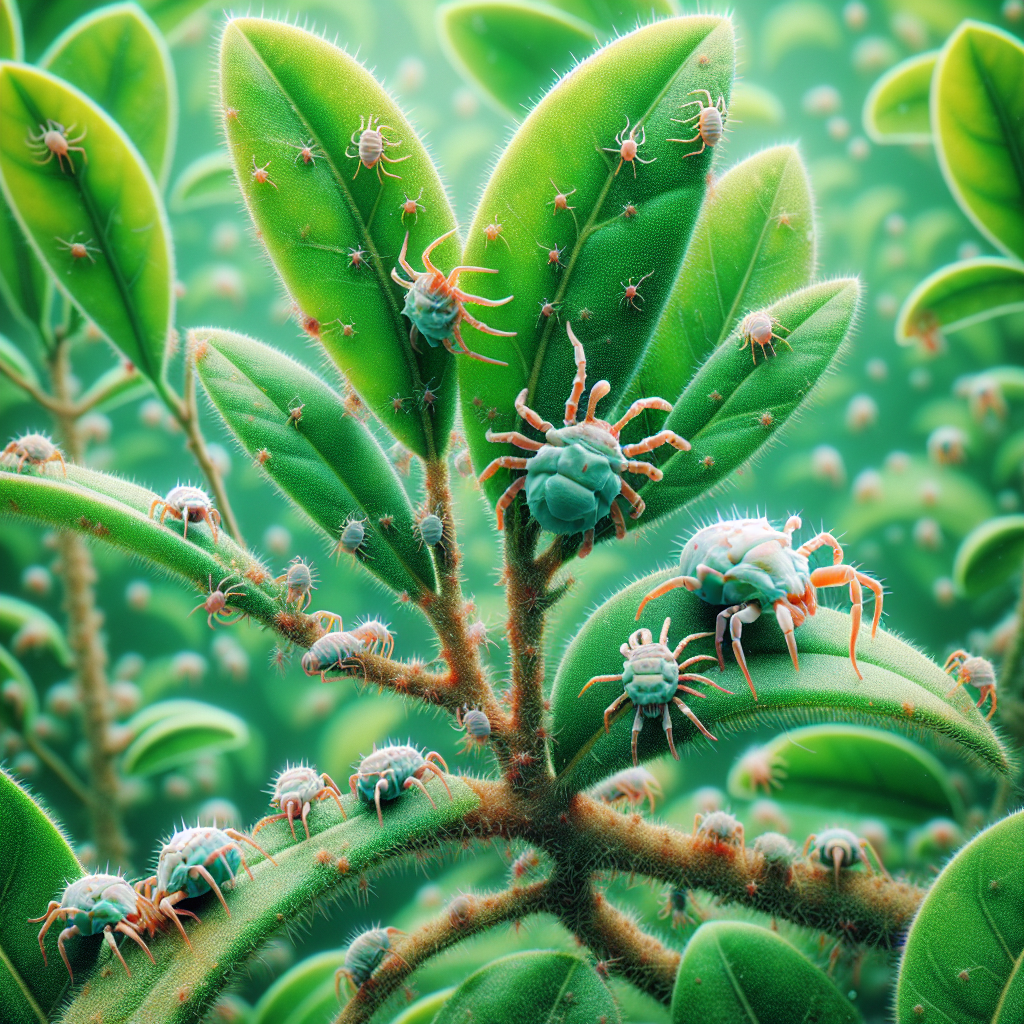Lychee Erinose Mites: A Detailed Analysis of a Plant Pest
The Lychee erinose mite, Eriophyes litchii, is a significant plant pest causing considerable economic damage to lychee and longan orchards globally. Its tiny size and cryptic feeding habits make it a challenging pest to manage.
Damage Caused:
The primary damage inflicted by E. litchii is the formation of erinose, a characteristic galling or distortion of leaf tissue. These galls appear as small, blister-like, velvety patches on the undersides of leaves, often accompanied by a pinkish or reddish discoloration. Severe infestations lead to:
- Reduced Photosynthesis: Gall formation reduces the leaf surface area available for photosynthesis, impacting plant vigor and fruit production.
- Leaf Drop: Heavily infested leaves may prematurely drop, further weakening the tree and diminishing yield.
- Fruit Deformation: While primarily affecting leaves, severe infestations can indirectly affect fruit development, leading to smaller, less marketable fruits.
- Reduced Fruit Quality: The overall quality of the fruit is reduced due to decreased size and potentially affecting sugar content and flavor.
Life Cycle and Impact of Each Stage:
E. litchii has a complex life cycle, involving several overlapping generations throughout the year. The life cycle generally consists of egg, larva, nymph, and adult stages.
- Egg: Microscopic eggs are laid within the leaf tissue. Their impact is minimal at this stage.
- Larva: The larval stage feeds on leaf cells, initiating the gall formation.
- Nymph: Nymphs continue feeding and contributing to gall growth. The increasing size of the galls begins to visibly impact the leaf.
- Adult: Adult mites are responsible for further gall development and reproduction, escalating damage across the plant. They remain on the underside of leaves, protected from harsh environmental conditions.
Plant Species Affected:
While primarily associated with lychee (Litchi chinensis) and longan (Dimocarpus longan), E. litchii may infest other plants within the Sapindaceae family, though the extent of damage can vary.
Variations in Impact:
The severity of infestation depends on several factors:
- Plant Variety: Some lychee and longan cultivars exhibit greater resistance to the mite than others.
- Environmental Conditions: High humidity and temperatures favor mite proliferation. Drought conditions can limit population growth.
- Infestation Level: The initial infestation level significantly influences the extent of damage and the resulting yield loss.
Feeding Habits and Reproduction:
E. litchii feeds by piercing plant cells and ingesting their contents. This feeding activity triggers the formation of erinose galls. Their reproduction rate is high, leading to rapid population explosions under favorable conditions.
Economic and Ecological Damage:
The economic impact of E. litchii infestations can be substantial, resulting in significant reductions in yield and fruit quality, thus impacting the profitability of lychee and longan production. The ecological impact is less directly quantifiable but can indirectly affect other members of the ecosystem by impacting the overall health of the host plant and potentially reducing biodiversity within the orchard environment.
Preventative Measures:
- Sanitation: Removing and destroying infested leaves and plant debris helps reduce the initial mite population and prevent the spread of the pest.
- Cultural Practices: Pruning to improve air circulation can reduce humidity and thus help suppress mite populations.
- Resistant Cultivars: Planting mite-resistant lychee and longan cultivars is a valuable preventative strategy.
Early Signs of Infestation and Monitoring:
Regularly inspect the undersides of leaves for the characteristic erinose galls and mites. Early detection is crucial for effective management.
Natural Predators and Biological Control:
Research is ongoing to identify and utilize effective natural predators or biological control agents for E. litchii.
Insecticide Controls (with safety precautions and resistance concerns):
While details on specific brand names and their registration are beyond the scope of a general response and vary widely by location, effective miticides such as abamectin (e.g., Avid), spiromesifen (e.g., Movento), and other registered products can be crucial for effective management. It is critical to always consult local agricultural extension services or pest management professionals for appropriate insecticide recommendations within your region, ensuring their safe and legal use. Resistance to miticides is a growing concern, highlighting the need for Integrated Pest Management (IPM) approaches.
Integrated Pest Management (IPM) Strategies:
IPM strategies combine various techniques to minimize pesticide use while effectively managing the pest. This involves monitoring mite populations, implementing cultural practices (pruning, sanitation), and using pesticides only when necessary and as a last resort.
Insecticide Resistance Management:
Implementing resistance management strategies is essential to preserve the effectiveness of miticides. This includes using different modes of action, rotating insecticides, and integrating other control methods.
Recommendations for Suspected Infestations:
If you suspect an E. litchii infestation, it is highly recommended to:
- Confirm the diagnosis: Consult with local agricultural extension services or pest management professionals to ensure accurate identification.
- Implement IPM strategies: Begin with cultural controls and monitoring.
- If necessary, use approved miticides: Follow label instructions carefully and consider resistance management strategies.
This detailed explanation provides a comprehensive overview of E. litchii. However, local conditions and regulations can impact the specific control measures and recommendations. Always consult your local agricultural authority for the most accurate and up-to-date information for your specific geographic area.
